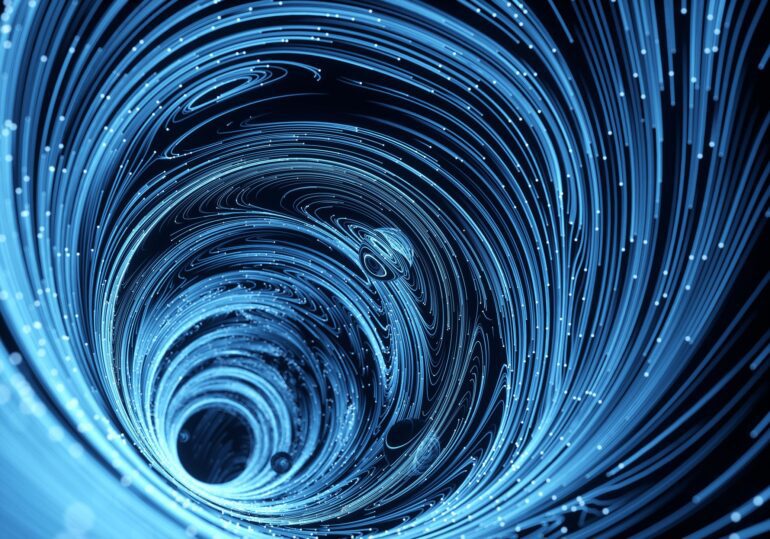TL;DR:
- WiMi Hologram Cloud Inc. has unveiled an innovative acoustic hologram reconstruction technique.
- This technique is based on unsupervised wavefield deep learning, eliminating the need for human intervention.
- It promises significant improvements in the efficiency and accuracy of processing acoustic data.
- Key steps involve data acquisition, pre-processing, deep learning model utilization, unsupervised learning, feature learning, and acoustic hologram reconstruction.
- WiMi’s approach is poised to impact diverse industries, including medical diagnostics, materials testing, and non-destructive testing.
- Acoustic hologram reconstruction finds applications in scientific research, medical imaging, engineering, manufacturing, and geological exploration.
- The technology enhances ultrasound imaging accuracy, aids in disease diagnosis, improves quality control, and optimizes resource exploration.
- WiMi’s innovation represents a trend toward automation and intelligence in acoustic data processing.
Main AI News:
In a groundbreaking announcement, WiMi Hologram Cloud Inc., a leading global provider of Hologram Augmented Reality (“AR”) Technology, has unveiled a cutting-edge acoustic hologram reconstruction technique based on unsupervised wavefield deep learning. This pioneering development addresses the limitations of traditional methods, promising to significantly enhance the efficiency and accuracy of acoustic data processing.
WiMi’s unsupervised wavefield deep learning-based acoustic hologram reconstruction stands out for its ability to reconstruct acoustic data holograms automatically without any supervision or human intervention. This innovative approach leverages unsupervised learning, allowing deep learning algorithms to autonomously uncover patterns and features within acoustic wavefield data. This breakthrough not only dramatically improves the processing efficiency of acoustic data but also opens up new possibilities across various industries, including medical diagnostics, material testing, and non-destructive testing.
The fundamental steps of this acoustic hologram reconstruction technique are as follows:
- Data Acquisition: Initially, acoustic data is acquired through sensors, capturing sound wave reflection, scattering, or propagation. This data includes critical information such as sound wave amplitude, frequency, and phase, typically recorded as a time series, constituting the acoustic wavefield data.
- Data Pre-processing: Acoustic wavefield data undergoes essential pre-processing steps, including noise removal and adjustment of amplitude range, ensuring data quality and consistency.
- Wavefield Deep Learning Model: At the heart of this technology is the deep learning model, which processes the acoustic wavefield data. This model may take the form of a convolutional neural network (CNN) or other neural network structures suitable for wavefield data processing.
- Unsupervised Learning: The key to this approach is the utilization of unsupervised learning, eliminating the need for labeled data to guide model training. The acoustic wavefield data itself contains a wealth of information for the model to learn from.
- Feature Learning: The deep learning model progressively learns features and patterns within the data by analyzing the acoustic wavefield. These features encompass frequency, wavelength, phase, amplitude, and more, which are crucial for acoustic hologram reconstruction.
- Acoustic Hologram Reconstruction: Once the model has acquired sufficient knowledge of features and patterns, it employs this information to generate acoustic holograms, visually representing how sound waves interact and propagate through various objects or media. This process reduces raw sound wave data into informative holograms.
- Model Optimization and Tuning: Throughout training, the model may require optimization and tuning to ensure high-quality and accurate acoustic hologram generation. Techniques such as backpropagation algorithms and loss functions are used to fine-tune model parameters.
WiMi’s unsupervised wavefield deep learning-based acoustic hologram reconstruction leverages deep learning to autonomously learn patterns and features in acoustic wavefield data, facilitating a wide range of acoustic data reconstruction tasks without the need for extensive labeled training data. This approach promises to enhance the efficiency and accuracy of acoustic hologram reconstruction, fostering innovation and application potential in the scientific field.
Acoustic hologram reconstruction holds significant importance in scientific research, with applications spanning material property exploration, medical diagnosis, and geological investigation. This technological advancement is poised to push the boundaries of scientific exploration, benefitting medical professionals by improving ultrasound medical imaging accuracy, aiding in disease diagnosis, and advancing patient care. In engineering and manufacturing, it can detect material and structural defects, bolster production line quality control, and reduce maintenance costs. In geological exploration, it can optimize resource exploration, increase efficiency, and reduce resource wastage.
WiMi’s unsupervised wavefield deep learning-based acoustic hologram reconstruction embodies the future trend of automation and intelligence. It harnesses the power of deep learning and unsupervised learning to bring intelligence and automation to acoustic data processing. This development promises more efficient, accurate, and innovative methods for analyzing acoustic data across various industries, ultimately driving scientific and technological innovation, enhancing medical diagnostics, improving industrial production quality, facilitating scientific research, and creating opportunities for resource exploration and utilization. The development of this technology is pivotal in solving complex problems and enhancing society’s well-being.
Conclusion:
WiMi’s groundbreaking unsupervised wavefield deep learning-based acoustic hologram reconstruction technique promises to revolutionize various industries, offering more efficient and accurate methods for analyzing acoustic data. This technological advancement will drive innovation, improve medical diagnostics, enhance production quality, and optimize resource exploration, making it a significant development for the market.

